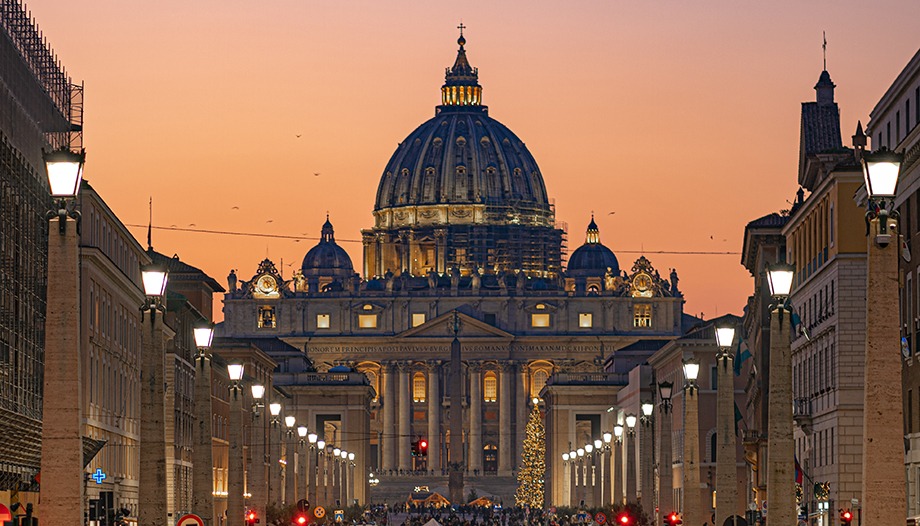The religious information sector is one of the most complex in the journalism landscape, due to the need for very specific skills and the need to disseminate news to a non-specialized public, without trivializing or distorting it. The disinterest of official sources to collaborate in a timely and exhaustive manner with journalists is not infrequent. So much so that silence becomes the working rule.
These are some of the points that have emerged in the round table that has presented the X edition of the Specialization Course in Religious Information, an initiative promoted by the ISCOM Association in collaboration with the Pontifical University of the Holy Cross School of Communication and the International Association of Journalists Accredited to the Vatican (AIGAV).
Official and unofficial sources
"The first source remains the Pope himself. His speeches, addresses, homilies, interviews". So says Manuela Tulli, journalist for ANSA, for whose agency she covers the Vatican and religious information. Among his publications 'Francesco, un nome un destino' (Laruffa) on the life of St. Francis of Paola, 'Eroi nella fede' (Acs) on the situation of Christians in Egypt. Winner in 2017 of the journalism award dedicated to Giuseppe De Carli on religious information. He recently participated in the editorial project 'Quaderni del Vaticano' in preparation for the Jubilee 2025 with a short essay on 'The meaning of life'.
Among the official sources, Tulli continues, "the Vatican press room, the Bulletin, the communiqués, the Vatican media (Vatican News, Osservatore Romano, Vatican Radio). And then the official accounts on social networks: Pontifex, TerzaLoggia, those of the cardinals, bishops and dicasteries."
For national or local information, Tulli mentions the office of social communication of the CEI, the Sir agency, Avvenire, Tv2000, the websites and publications of the dioceses.
Interesting is the reference to the coverage of the judicial activity, "useful not only to know the facts of this or that trial, but also the mechanisms of the decisions and the practices followed. Beyond the cases themselves, one becomes aware, through the hearings at the Vatican tribunal, of snippets of life inside the Leonine walls that would otherwise remain unknown. As an example, Tulli recalls the trial for alleged abuses at the Preseminary.
Referring to unofficial sources, the ANSA journalist underlines how "Vatican information has to be patiently built up over time. It is the result of relationships that are not always easy to build. It is necessary to have a broad spectrum of sources to avoid being instrumentalized." There are the officials of the dicasteries of the Curia but, Tulli concludes, also the embassies to the Holy See, the pontifical universities, experts in the field: "Everything can contribute to the construction of a picture like so many small pieces of a mosaic".
Competition and fellowship
A picture enriched by the interventions of Francesco Antonio Grana and Loup Besmond de Senneville. The former, a Vaticanist of il fattoquotidiano.it and secretary of the Cardinal Michele Giordano Award, observes "that even the highest of sources - the pontiff - can lie and manipulate the journalist".
Among Grana's publications on the life of the Church, he has edited Pope Francis' book An Encyclical on Peace in Ukraine (Terra Santa Edizioni).
Of Bergoglio, of whom he is a personal friend, he praises "the great journalistic sense and the great ability to manage crisis communication (pederasty, Orlandi case, etc.)".
Despite the healthy and inevitable competition among Vaticanists, Grana identifies the professionalism, craft and delicacy of some of his colleagues as the added value of objective religious information, because ultimately, he says, "it is the signature itself that gives veracity to the facts."
"There is no truly organized communication strategy."
"The difficulty of the sources of religious information, the need for a high degree of competence, the lack of communication between the actors, their lack of professionalism, the choice of silence, with the conviction that good things do not make noise". These are, in the opinion of Loup Besmond de Senneville, Vatican correspondent for the French daily "La Croix" and president of AIGAV, the most obvious criticisms of a system in which "there is no truly organized communication strategy, with the lack of two essential elements that exist in all other political institutions: the off and the on".
This obliges religious information professionals "to have their own sources," notes Besmond de Senneville, "to bring new information and help understand reality: why the Pope has said a word or not; why he has acted in a certain way or not."
As for religious information, he says, universities are also excellent, often overlooked resources, home to many experts. "I'm thinking of Sant'Anselmo for liturgy, Pisai for Islamology, the Gregorian and Holy Cross for canon law. In Rome, diplomats also constitute an important network."
The difficulty lies in having sources that speak and agree to be quoted. Personally," concludes Besmond de Senneville, "this poses quite a few problems for our readers, who do not understand the difficulties. Many are convinced that an anonymous source is an invented source.












